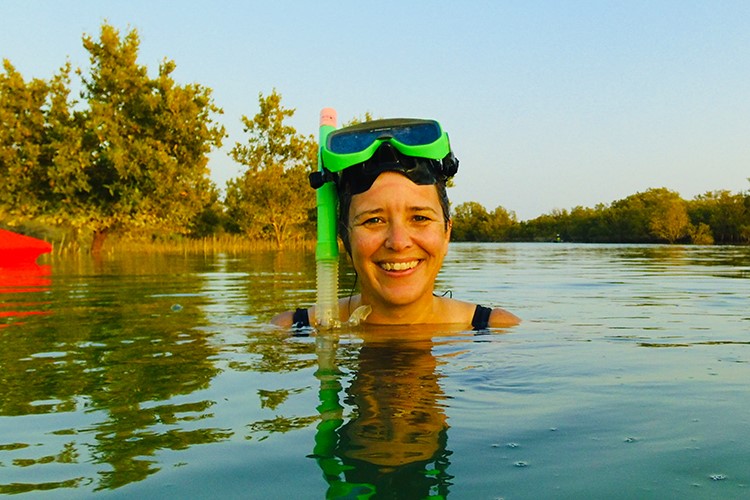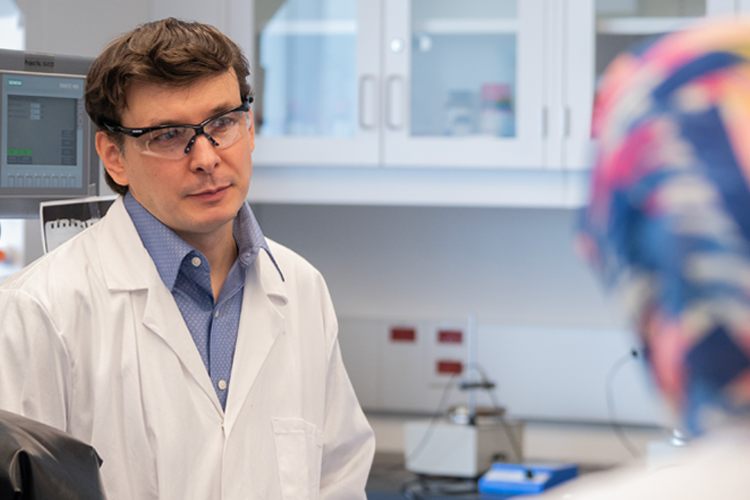Delving into past marine life to better comprehend modern climate issues

Dr. Hilary Corlett is an assistant professor of paleontology at Memorial University of Newfoundland and Labrador. As an early-career researcher, she studies rocks that contain fossils of ancient marine life to understand the impacts of climate change at different times on Earth and learn more about the climate challenges we face today.
Can you describe your research program?
I look at ancient marine life, namely the composition of the flora and fauna frozen in time in rocks, to investigate the conditions that existed hundreds of millions of years ago. This helps us understand why a particular ecosystem was thriving or struggling at that time and, in turn, contributes to our knowledge around modern life issues. As you know, if we want to figure out what the ocean temperature was 380 million years ago, we can't just pop a thermometer in! So, we use geochemical proxies that can tell us how a particular mineral formed and what the water temperature was at that time. I target “interesting” time periods in my research, for example: major shifts in climate, periods leading up to extinctions or intervals where there has been a change in biodiversity. I investigate the physical and chemical conditions of the marine environment that could have caused these changes.
I also look at how communities of organisms would have produced sediments that then became rocks, and how these rocks may have been altered between the time they formed and now, when they’re being analyzed. It is possible that some of the geochemical changes in the rocks are misleading us into thinking that a big event took place, when in reality, it’s an interaction, perhaps millions of years later, that led to these changes. There’s always a risk of misinterpretation when we only scratch the surface.
What locations have you chosen for your research?
For my current research program, two of the locations I work in are the Bahamas and Abu Dhabi, because these settings are similar to the ancient environments we are trying to answer critical questions about. Some past life has no modern analog, but a lot of the things that we see in the ancient oceans have some sort of relative or similar organism living today that sits in the same niche as the ancient life. From a geological standpoint both locations are critical for understanding the past, because they are in contrasting humid and arid zones. Another aspect of my research is that working in modern locations brings modern issues to light with certain organisms currently under threat; while gaining knowledge to understand the past, I also get to identify cycles through time, which can help predict current threats. The past and present are complementary: I like to take what’s learnt from the modern world and apply it to the past, and then take what’s learnt from the past and apply it to the present.
You openly talk about the mobility restrictions you experience. How do they affect your work as a researcher?
I was born with arthrogryposis, a physical disability that affects my lower body, mostly my joints and musculature. Because of how this evolved and led to arthritis, I now use crutches—interestingly, I am now able to walk longer distances with these aids, giving me more mobility. Luckily, I am a very good swimmer and can do a lot of my research in the water. However, when I do field-based work where there’s a lot of topography, like in the Rocky Mountains for example, it can be tricky, and I have to be open about it. Aside from the very first time I tried entering the geology program (and was told I couldn’t!), I have had mostly supportive people around me. Coming from a family of geologists, nobody was surprised when I chose geology as my core discipline during my undergraduate degree. Perhaps the main frustration that comes with mobility restrictions is when people impose on you what they think you can and cannot do. Day-to-day not a moment goes by that you don't think about what you can and cannot do when you live with a disability—it's just part of your day. When someone says that you can't go on a fieldtrip or do a job, because you won't be able to walk in the area, it’s frustrating. For me, it's especially frustrating when I’m familiar with the site and know that I could. In other circumstances, I can usually find a workaround, although it is not always the most cost- or time-efficient option.
As an early-career researcher, what was the significance of NSERC funding to your research program?
Receiving NSERC funding was quite a relief! We are lucky to have research program-based funding here in Canada, as opposed to research project-based funding as it is the case in many other countries. This funding helps free up time so that I, as an early career researcher, do not have to spend the majority of my time writing grants. It also gives me the ability to fund students. That’s huge, because I wanted to have a research group of undergraduate and graduate students that I could mentor and help reach their next career stages. Working with students energizes me; their questions get me thinking and make me excited about science all over again!
This researcher received a Discovery Grant and Discovery Launch Supplement from the Natural Sciences and Engineering Council of Canada. Consult Hilary Corlett’s ![]() web page to learn more about her research.
web page to learn more about her research.
This interview has been condensed and edited for length and clarity.
Up next

AI used to discover clean energy materials 'faster and more efficiently'
Researchers at the University of Toronto have developed a method of harnessing artificial intelligence to discover new and more efficient materials for clean energy technology.